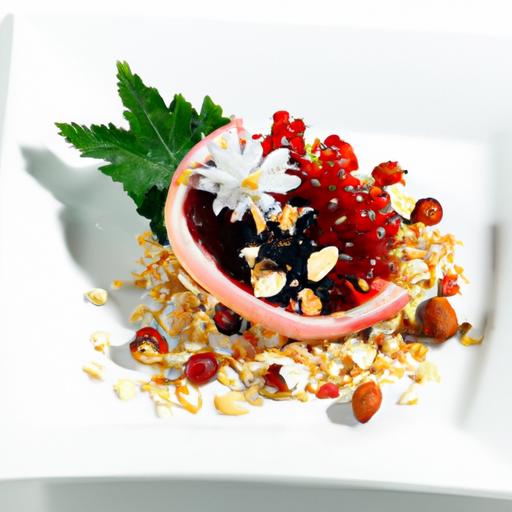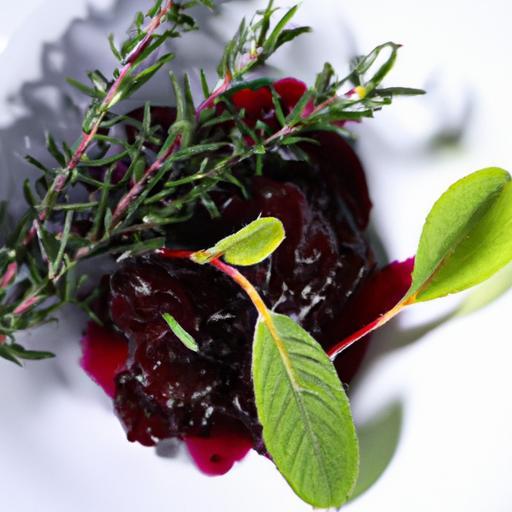In the intricate symphony of heart health, nature often plays the sweetest melodies. Among its many botanical treasures, hawthorn stands out as a timeless ally, whispering ancient secrets of vitality and strength. This unassuming shrub, adorned with delicate blossoms and vibrant berries, has long been celebrated for its heart-enhancing virtues. In “Harnessing Hawthorn: Natural Boost for Your Heart Health,” we delve into the science and tradition behind this remarkable plant, uncovering how it can support your cardiovascular wellbeing in a world where heart care has never been more vital. Join us as we explore the natural power locked within hawthorn-an age-old remedy waiting to rejuvenate your heart’s rhythm.
Harnessing Hawthorn Berries for Cardiovascular Wellness begins with understanding their rich heritage and potent benefits for heart health. Originating from traditional European and Chinese medicine, hawthorn berries are celebrated for centuries as a natural tonic to support heart function and improve circulation. Their vibrant red hue hints at powerful antioxidants that fight inflammation and strengthen blood vessels, perfect for anyone seeking a delicious way to nurture their cardiovascular system naturally.
Prep and Cook Time
Preparation: 10 minutes | Cook Time: 20 minutes | Total Time: 30 minutes
Yield
Serves: 4
Difficulty Level
Easy
Ingredients
- 1 cup dried hawthorn berries, rinsed and pitted
- 4 cups filtered water
- 1 tablespoon raw honey (optional, for sweetness)
- 1 cinnamon stick (adds warmth and heart-friendly antioxidants)
- 1 teaspoon dried orange peel (for bright, citrus notes)
- Fresh lemon slices, to garnish
- Fresh mint leaves, for garnish and refreshing aroma
Instructions
- Simmer the hawthorn berries: Place the rinsed hawthorn berries in a medium saucepan with 4 cups of filtered water. Add the cinnamon stick and dried orange peel.
- Bring to a gentle boil: Over medium heat, bring the mixture to a boil, then immediately reduce the heat and let it simmer uncovered for about 20 minutes. This allows the berries to release their beneficial compounds into the water.
- Strain the infusion: Use a fine mesh strainer to carefully remove the solids, pressing lightly to extract all the flavor and nutrients. Discard the solids.
- Add natural sweetness: While the liquid is still warm, stir in 1 tablespoon of raw honey to elevate the flavor and calm the palate.
- Serve warm or chilled: Pour the hawthorn berry infusion into your favorite mugs or glasses, garnishing each with a fresh lemon slice and a few mint leaves for an invigorating touch.
Tips for Success
- Choose quality berries: Use organic, pesticide-free dried hawthorn berries for the purest taste and maximum health benefits.
- Honey variation: Substitute raw honey with maple syrup or stevia if you prefer a vegan or lower-glycemic option.
- Make ahead: This heart-boosting tea keeps well in the refrigerator for up to 3 days-perfect for prepping a batch to enjoy daily.
- Boost absorption: Pair your hawthorn infusion with a source of vitamin C to further enhance cardiovascular support.
- Complement with diet: Incorporate hawthorn alongside nutrient-rich foods like leafy greens, nuts, and fatty fish for comprehensive heart health.
Serving Suggestions
Enjoy this refreshing hawthorn berry infusion as a nourishing start to your morning or a calming afternoon ritual. Serve it warm on chilly days to soothe and support circulation or chill it over ice with a splash of sparkling water for a vibrant heart-healthy mocktail. Garnish with edible flowers like pansies or violets for an elegant touch, or pair alongside a slice of whole grain toast topped with avocado to further encourage cardiovascular wellness. This versatile hawthorn beverage also makes a thoughtful and wholesome guest offering, showcasing your passion for natural wellbeing beautifully.
| Nutrient | Amount per Serving |
|---|---|
| Calories | 45 |
| Protein | 1 g |
| Carbohydrates | 12 g |
| Fat | 0 g |

For those interested in expanding their heart-healthy repertoire, explore our detailed guide on heart-healthy herbs and spices that complement hawthorn beautifully. To delve deeper into the science behind hawthorn’s cardiovascular benefits, the National Center for Biotechnology Information provides a comprehensive research overview.
Q&A
Q&A: Harnessing Hawthorn – Your Natural Boost for Heart Health
Q1: What exactly is hawthorn, and why is it called a heart herb?
Hawthorn is a flowering shrub or small tree, scientifically known as Crataegus, celebrated for its bright red berries and delicate blossoms. Often dubbed the “heart herb,” hawthorn has been cherished since ancient times for its powerful connection to cardiovascular wellness. Traditional healers believed its leaves, flowers, and berries held the secret to nurturing a strong, vibrant heart-literally supporting both heart and emotion.
Q2: How does hawthorn support heart health?
Hawthorn is a natural treasure trove of antioxidants, including flavonoids and oligomeric proanthocyanidins, which help relax blood vessels, improve blood flow, and reduce oxidative stress. This means your heart can pump more efficiently with less strain. Additionally, hawthorn aids in balancing blood pressure, strengthening heart muscle contractions, and even calming arrhythmias-a symphony conductor for your cardiovascular rhythm.
Q3: Can hawthorn be used alongside conventional heart medications?
While hawthorn offers promising heart benefits, it’s essential to approach it thoughtfully. Because hawthorn can interact with medications like beta-blockers, digoxin, or blood thinners, always consult your healthcare provider before adding it to your routine. Together, you can tailor a holistic and safe heart care plan that harnesses nature’s best while respecting modern medicine.
Q4: In what forms can hawthorn be enjoyed?
The beauty of hawthorn is its versatility. You can sip it as a soothing tea brewed from dried berries and leaves, take standardized extracts in capsule form, or find it in tinctures for a more potent dose. Some creative cooks even use hawthorn berries to craft jams or syrups, turning heart-healthy habits into delicious rituals.
Q5: Are there any precautions or side effects to be aware of?
Generally safe for most people when used appropriately, hawthorn might cause mild digestion issues or dizziness in sensitive individuals. Overuse isn’t recommended, especially in pregnancy or if you have serious heart conditions without medical supervision. Respecting dosage and seeking professional guidance transforms hawthorn from a simple herb into a mindful guardian of your heart.
Q6: How long does it take to see benefits from hawthorn?
Think of hawthorn as a gentle, steady friend rather than an instant miracle. Most people notice improvements in circulation and reduced heart discomfort within 4 to 8 weeks of consistent use. Its magic lies in gradual support, helping your heart thrive over time with patience and persistence.
Q7: Can hawthorn help with stress-induced heart issues?
Absolutely. Hawthorn’s mild calming effects can ease the nervous system’s grip on the heart, lowering stress-induced spikes in blood pressure or palpitations. It’s a natural way to soothe the emotional and physical rhythms of your heart, offering a botanical balm for both body and soul.
Harness the gentle power of hawthorn and let nature’s heart tonic nurture your life’s most vital beat.
Wrapping Up
As we’ve explored, the humble hawthorn berry is much more than just a pretty shrub-it’s a small but mighty ally for your heart. By harnessing its natural power, you can support your cardiovascular wellness in a gentle, time-tested way. Whether you choose to sip it as a tea, savor it in supplements, or incorporate it into your daily routine, hawthorn invites you to nurture your heart with nature’s own touch. Embrace this botanical boost and let your heart beat with renewed vitality-because sometimes, the best care truly grows from the ground up.


